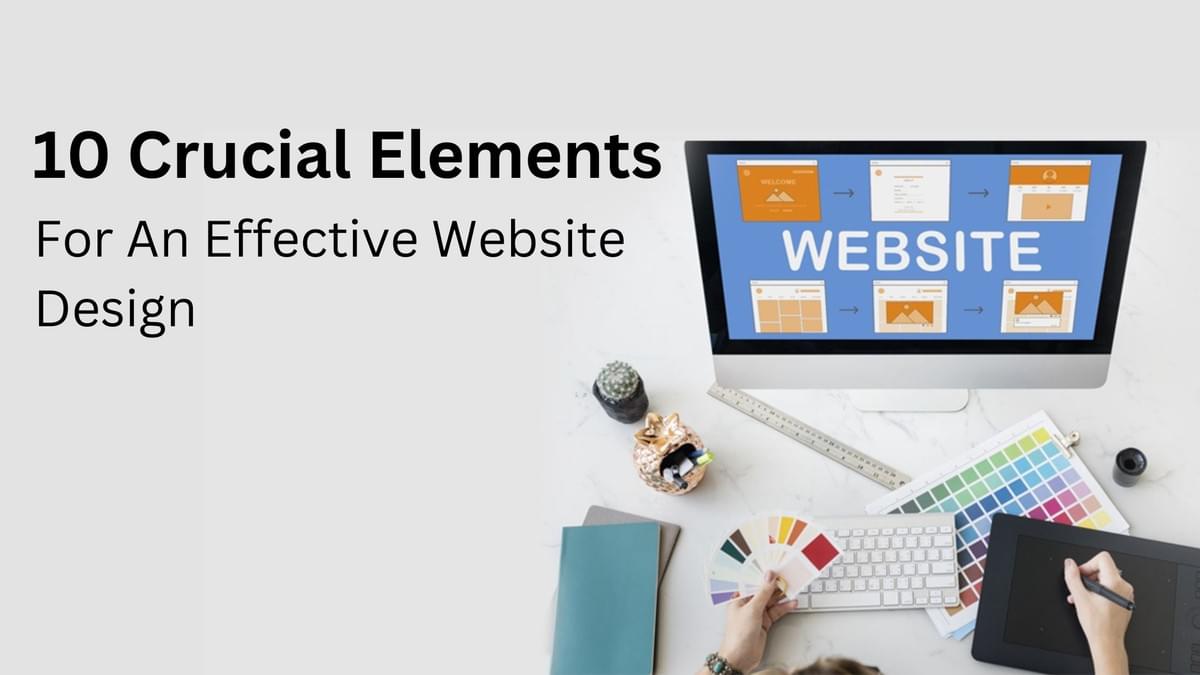
Designing an effective website requires balancing aesthetics, functionality, and user experience. A well-crafted website not only looks appealing but also drives engagement, conveys trust, and guides users toward desired actions. Here are ten crucial elements to consider when designing a website that meets the needs of modern users and achieves business goals.
1. Clear Navigation
Navigation is the roadmap of your website. Visitors should be able to find what they’re looking for quickly and easily. Well-structured menus, breadcrumbs, and intuitive layout help reduce confusion and frustration. A website with clear navigation ensures users stay longer, explore more pages, and are less likely to bounce. Important links such as "About Us," "Services," and "Contact" should be visible on every page. Additionally, incorporating a search bar is essential for larger websites with vast content.
Best Practices:
- Use simple, straightforward language for menu items.
- Keep navigation consistent across all pages.
- Ensure mobile responsiveness, especially for dropdown menus.
Introducing SFWPExperts a top-tier WordPress website design and development agency that excels in creating responsive, user-friendly websites tailored to your business needs. With expertise in modern web design elements like SEO optimization and conversion-focused layouts, they help businesses enhance their online presence and boost performance through dynamic, custom WordPress solutions.
2. Responsive Design
In today’s multi-device world, your website must look and function well on various screen sizes, from desktops to smartphones. A responsive design automatically adjusts the layout based on the screen's dimensions, offering a seamless user experience no matter the device. Google also prioritizes mobile-friendly websites in search rankings, making responsiveness essential for both user experience and SEO.
Best Practices:
- Test the website on multiple devices to ensure compatibility.
- Optimize images and media for faster loading times on mobile.
- Consider touch-friendly navigation elements like buttons instead of text links for mobile devices.
3. Fast Loading Speed
No one likes waiting for a slow website. In fact, studies show that users are likely to abandon a website if it takes longer than three seconds to load. Speed impacts user experience and SEO, with faster websites ranking higher on search engines. Optimize your website's performance by compressing images, leveraging browser caching, and minimizing code.
Best Practices:
- Compress images without compromising quality.
- Reduce the use of heavy scripts or unnecessary plugins.
- Use a content delivery network (CDN) to distribute resources efficiently.
4. Engaging Visual Design
Your website’s design is often the first impression you make on visitors. It should reflect your brand’s identity and resonate with your target audience. Use color schemes, fonts, and imagery that align with your brand, while maintaining a visually appealing and uncluttered design. A minimalist design with ample white space makes your content more readable and reduces cognitive load.
Best Practices:
- Stick to a consistent color palette and font family.
- Use high-quality, relevant images and videos.
- Avoid overwhelming users with too much visual information.
5. Strong Call-to-Actions (CTAs)
An effective website guides users toward taking specific actions, such as making a purchase, signing up for a newsletter, or contacting your company. Strong, clear calls-to-action (CTAs) should be prominently placed throughout your website. Use action-oriented language and design CTAs to stand out while maintaining visual harmony with the rest of your design.
Best Practices:
- Make CTAs stand out with contrasting colors or buttons.
- Use clear, actionable language like “Buy Now” or “Get Started.”
- Place CTAs strategically on key pages such as the homepage, product pages, and blog posts.
6. User-Centric Layout
A user-friendly website is designed with the end-user in mind. Focus on creating a layout that makes it easy for users to navigate, find information, and achieve their goals. Whether they’re reading a blog post, browsing products, or filling out a form, ensure the layout is intuitive and optimized for ease of use.
Best Practices:
- Prioritize important content above the fold.
- Use visual hierarchy to guide users' attention.
- Design forms that are easy to complete, with clear instructions and minimal fields.
7. SEO-Friendly Structure
Even the most beautiful website is useless if it can’t be found. An SEO-friendly structure helps search engines index and rank your website, improving visibility. This includes optimizing URLs, title tags, meta descriptions, alt text for images, and incorporating relevant keywords naturally into your content.
Best Practices:
- Ensure URLs are clean and descriptive.
- Use proper heading tags (H1, H2, etc.) for content hierarchy.
- Create SEO-friendly content that aligns with search intent.
Read More Articles:
- What is Generative Engine Optimization (GEO)?
- An Ultimate Guide To Using Breadcrumbs In Your Website Design
- How To Create An Attractive Splash Screen? Explained With Implementation Of Splash Screen In Android
- The Benefits of Responsive Design In WordPress Websites
- WordPress Website Design: Common Mistakes to Avoid
Reference Profile Websites: